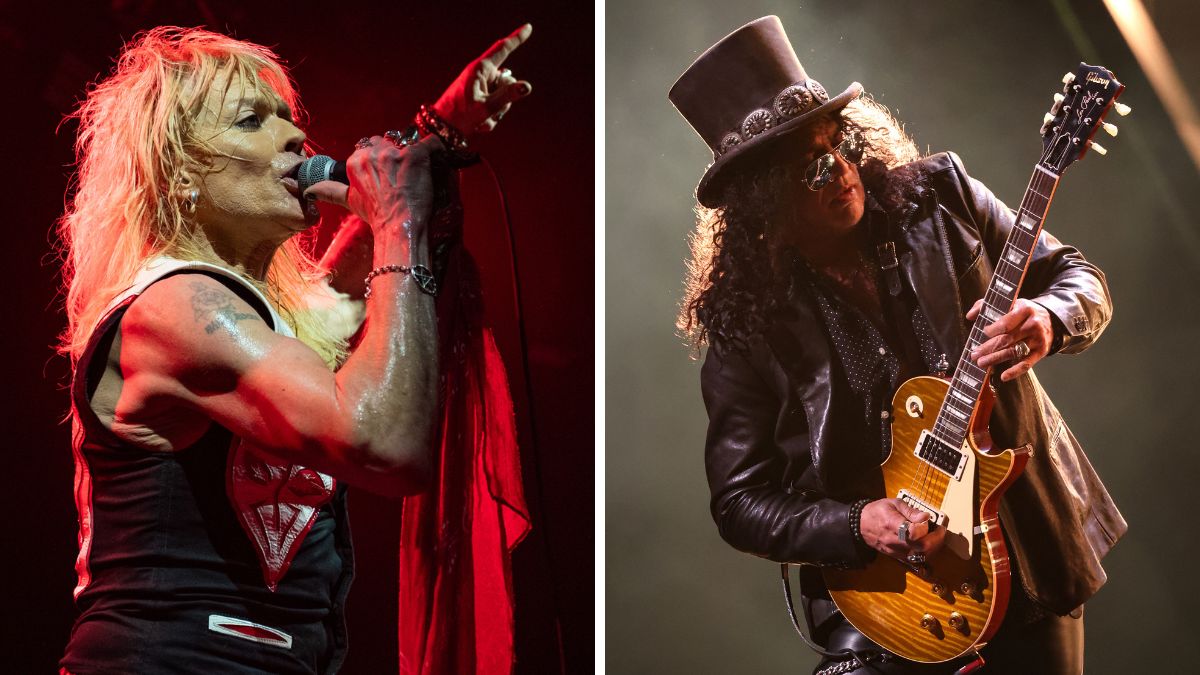“An amazing opportunity for more players to experience the spirit of Greeny”: The Epiphone Kirk Hammett ‘Greeny’ Les Paul is finally here – complete with a Gibson headstock and a price tag to match
The most anticipated Epiphone model in its history hails the arrival of a new era of Inspired by Gibson Custom Shop models

Epiphone has unveiled what must be the most anticipated signature guitar in the brand’s long history, the Epiphone Inspired by Gibson Custom Shop Kirk Hammett ‘Greeny’ 1959 Les Paul Standard.
We predicted yesterday that a feature like the Gibson open-book headstock (teased in advance by Gibson CEO Cesar Gueikian) was indicative of a premium price, and we were not wrong.
At $1,499, it is – by some margin – the most expensive Epiphone Les Paul, and ties with Dave Mustaine’s Prophecy Flying V Figured as the most expensive Epiphone to be made in China.
So what are you getting for your $1,500? Well, much of that money has gone on the components.
Epiphone’s Chinese facility has clearly had to do some amount of retooling (or purchasing direct from its parent firm), in order to create the Gibson-style headstock and Custom Greeny profile neck.
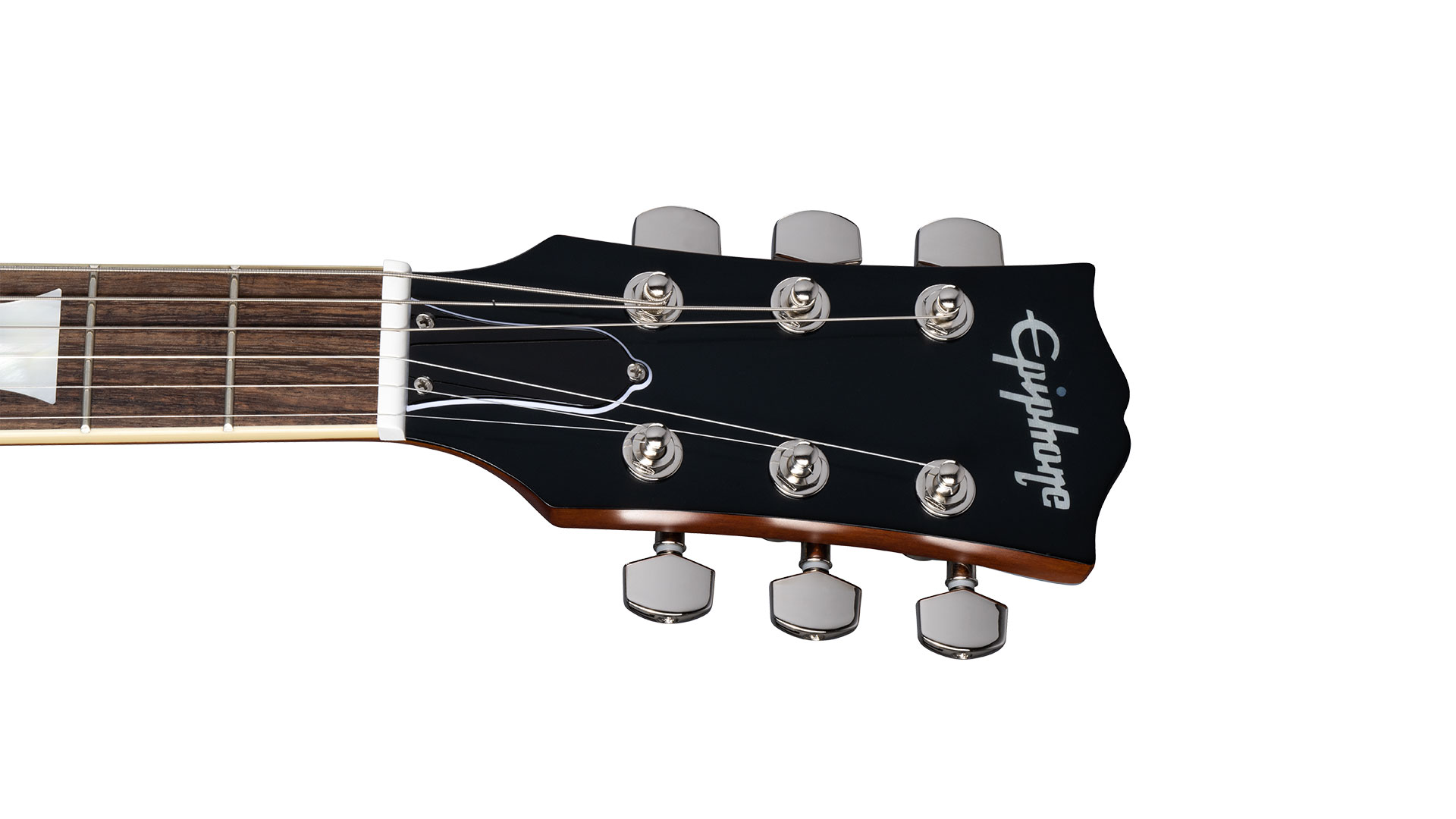
Then you’ve got a pair of Gibson’s USA Greenybucker humbuckers, which cost $299 as a standalone. These, of course, have been installed with the neck pickup reverse-mounted in the style of the iconic original Greeny, enabling you to (hopefully) nail those out-of-phase tones that were key to Peter Green’s most famous recordings.
Then there are CTS pots and Mallory (as opposed to orange drop) capacitors with ’50s wiring, a Switchcraft output jack and toggle switch, and – mounted on that open book headstock – Grover Rotomatic with Spade Button tuners.
Get The Pick Newsletter
All the latest guitar news, interviews, lessons, reviews, deals and more, direct to your inbox!
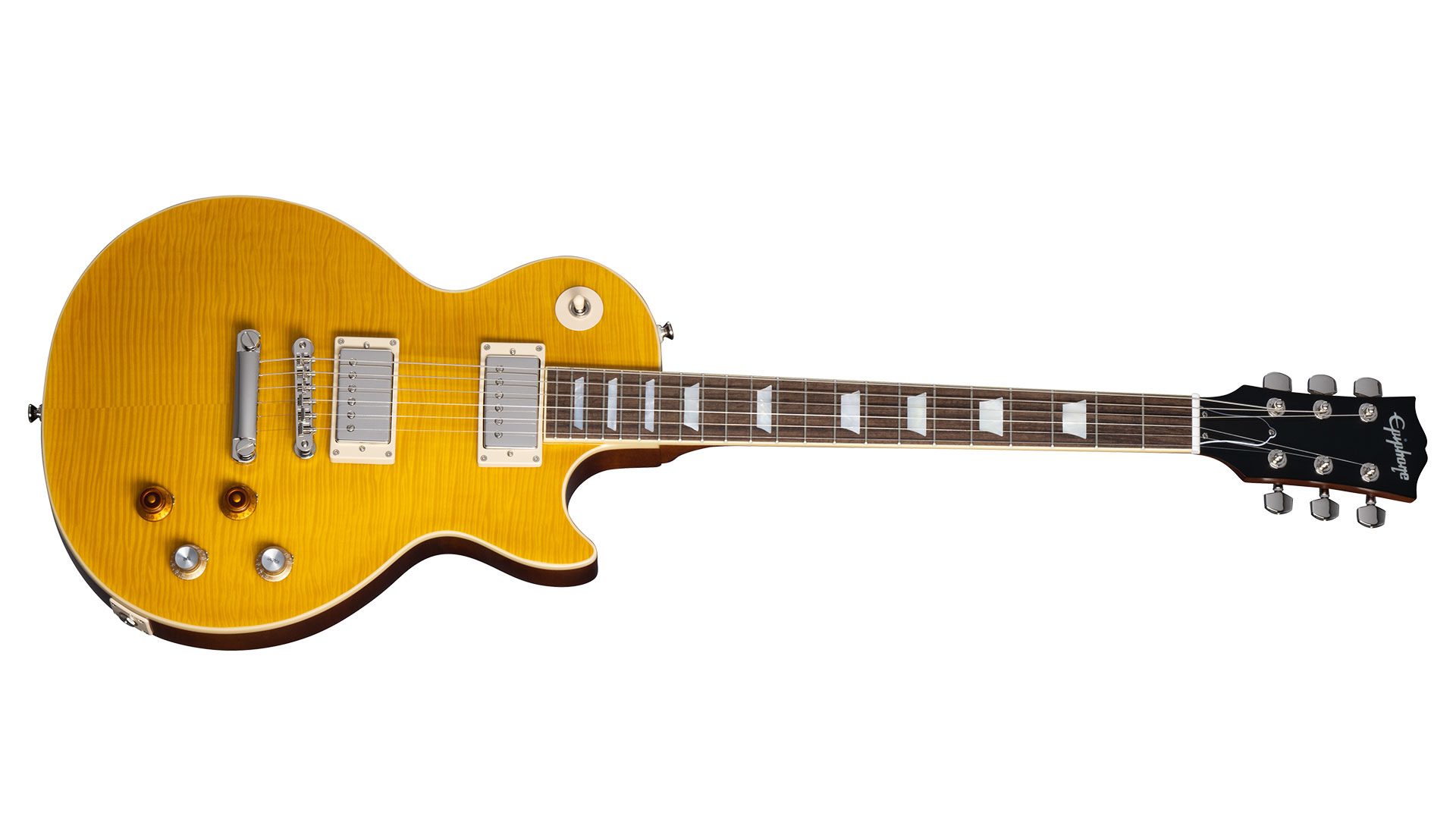
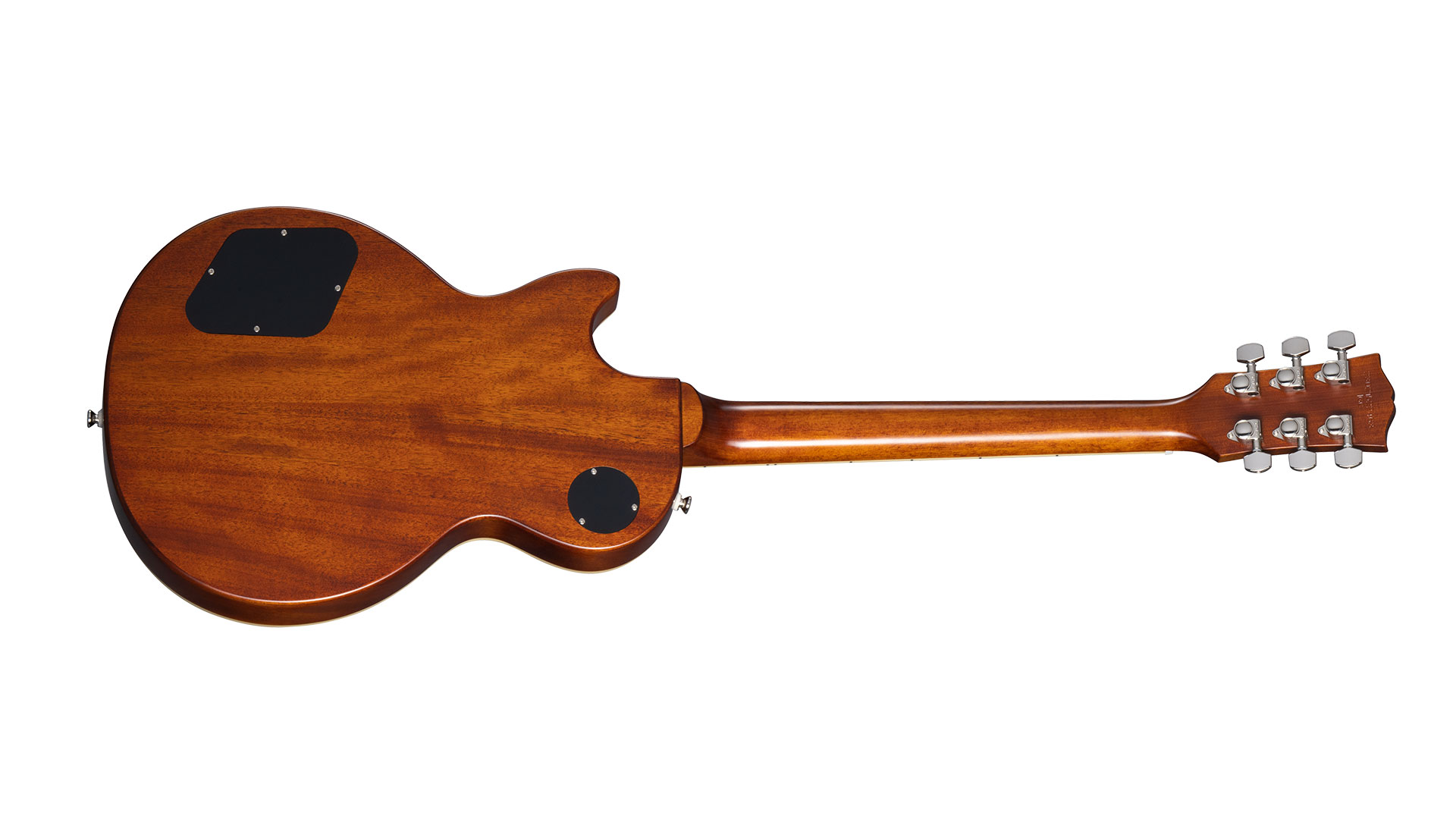

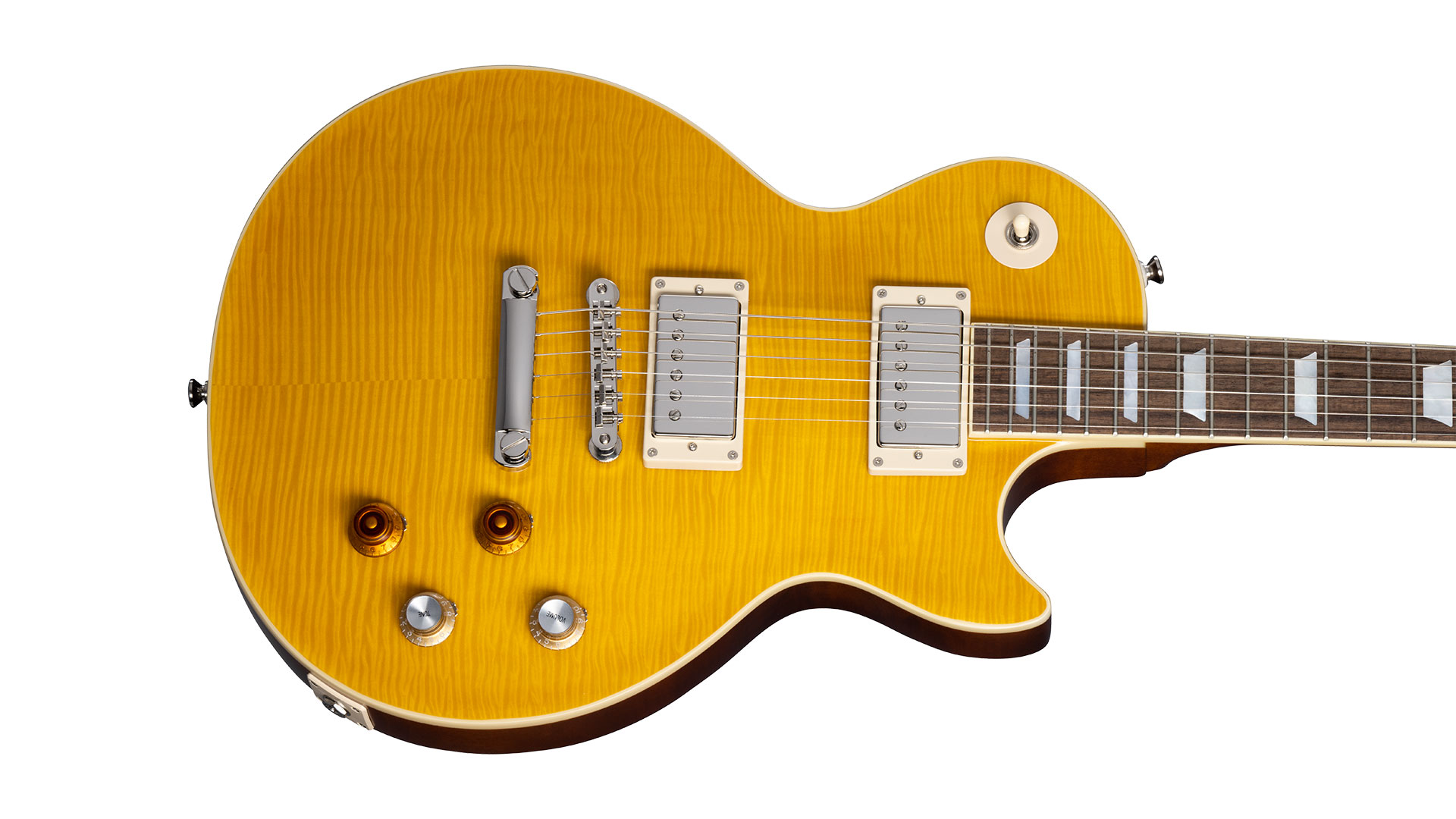
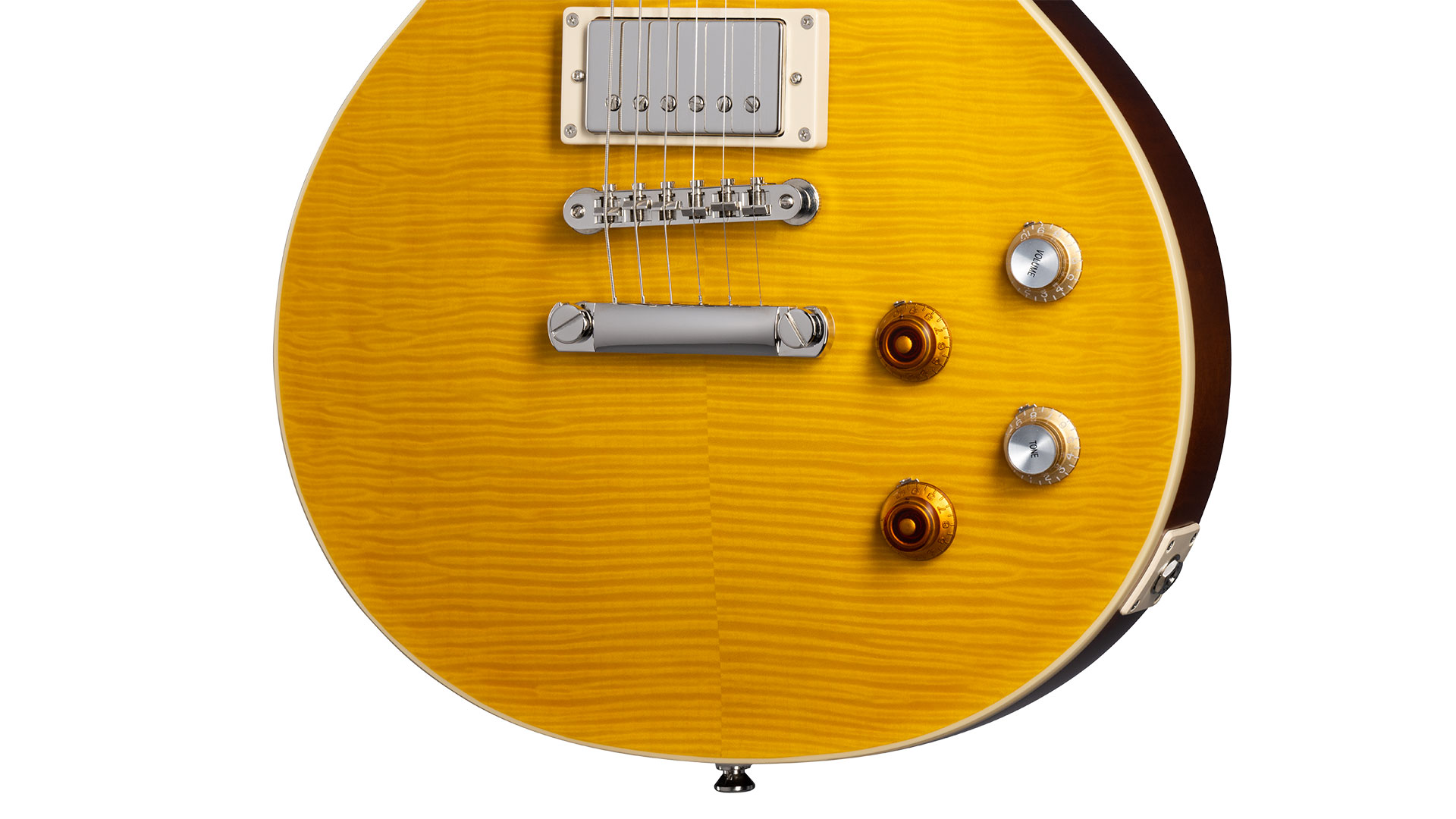
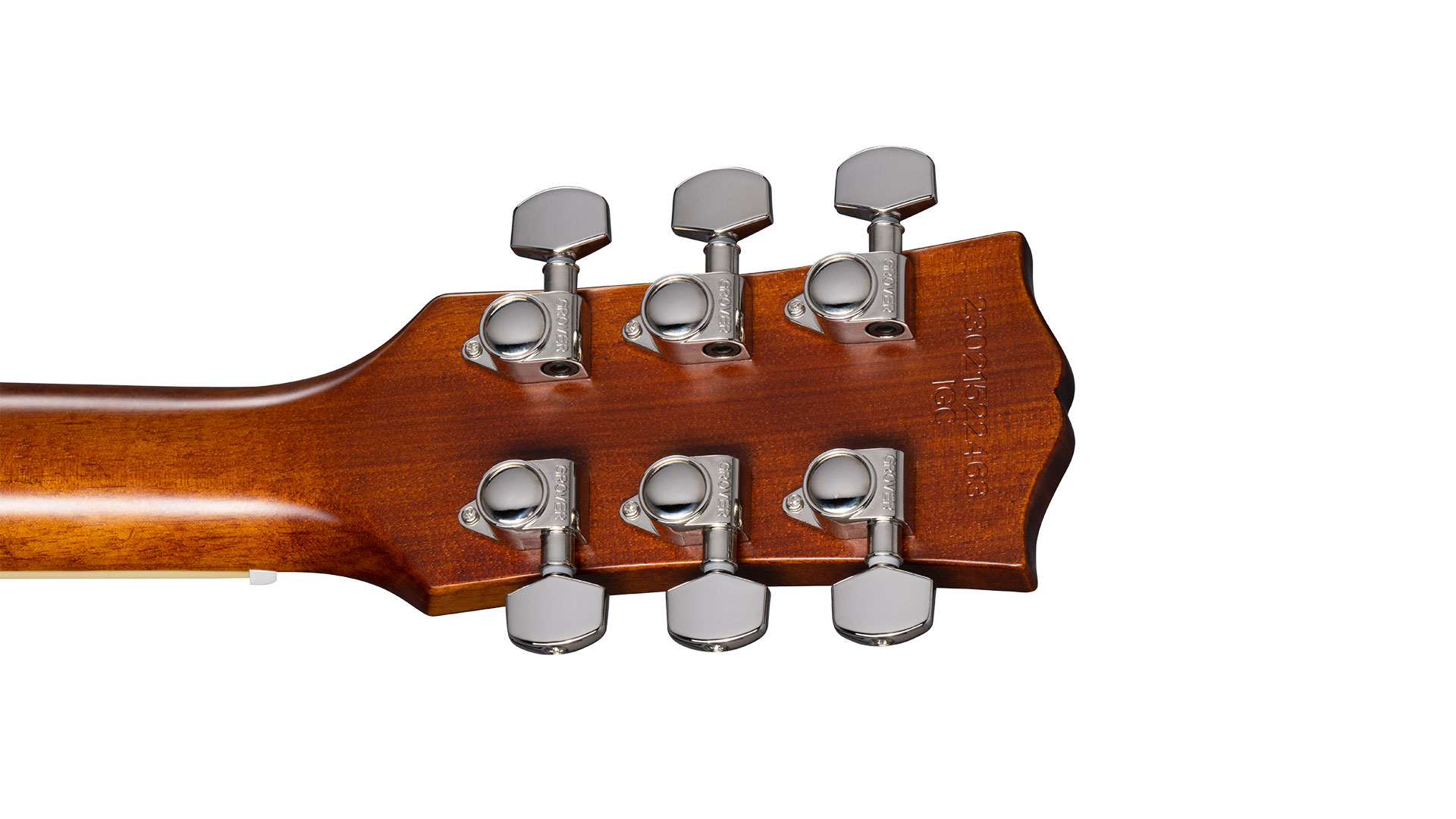
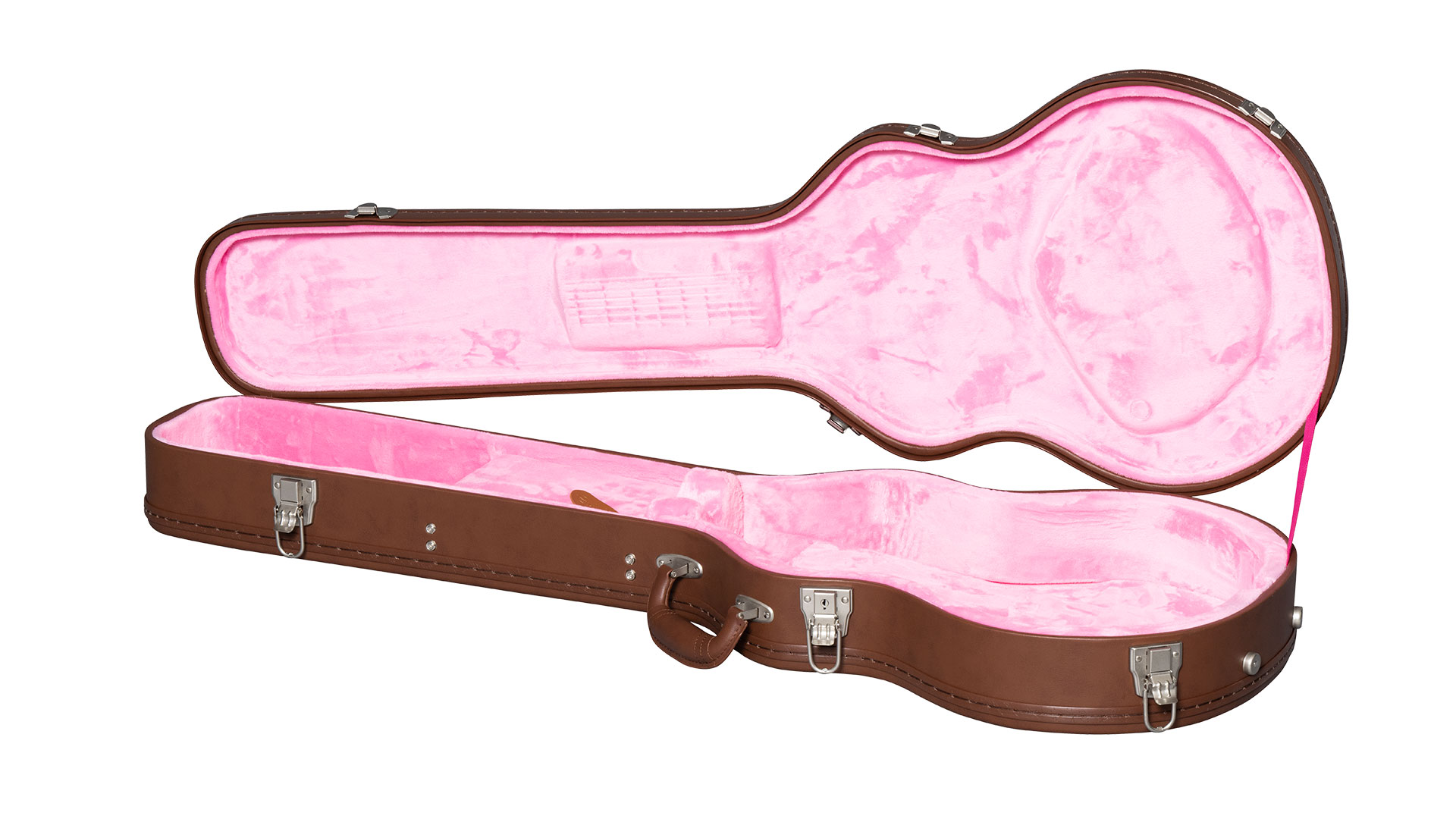
The tonewoods are quite traditional, if not entirely faithful to the Gibson USA Greeny.
As such, you’ve got a mahogany body with a maple top and flame maple veneer (as opposed to a flame maple top), which achieves the look and is the same approach used on the Epiphone 1959 Les Paul Standard.
Then there’s a one-piece mahogany neck, an Indian Laurel fingerboard (as opposed to rosewood), and Mother of Pearl trapezoid inlays.
A nice final touch is the inclusion of a Lifton-style brown hardshell case with a pink plush interior – Epiphone’s take on the classic Gibson Les Paul case of the 1950s.
So, yes, the price is pretty crazy as Chinese-made Epiphones go, but this is 2023 and, as ever with modern-day Gibson, seems to be designed to ride that line between ‘just about reasonable’ and painfully premium.
Regardless, it is nonetheless extremely well-equipped and represents a significant saving over the USA version, which comes in at $3,199, and certainly – off the back of the $20K Custom Shop Greeny and $50K Custom Shop Collector’s Edition Greeny – seems almost justifiable.

As Greeny’s custodian, Kirk Hammett, puts it: “Greeny is a guitar of the people and this is an amazing opportunity for more players to experience the spirit of Greeny.”
“Kirk worked with us every step of the way to ensure this Epiphone Inspired by Gibson Custom Shop ‘Greeny’ model has the same sound and feel as his legendary original guitar,” adds Mat Koehler, Gibson Brand’s VP of Product.
“It was extremely important for him that we get it right. I know that we’ve done him proud because he couldn’t – and still can’t – stop playing the prototype.”
Interestingly, in the same statement, Koehler also reveals that the open-book headstock will appear elsewhere in the Epiphone line-up, hailing the first arrival in a new tier of ‘Inspired by Gibson Custom Shop’ builds.
For more information, on the [inhales] Inspired by Gibson Custom Shop Kirk Hammett ‘Greeny’ 1959 Les Paul Standard, head to Epiphone.

Matt is Deputy Editor for GuitarWorld.com. Before that he spent 10 years as a freelance music journalist, interviewing artists for the likes of Total Guitar, Guitarist, Guitar World, MusicRadar, NME.com, DJ Mag and Electronic Sound. In 2020, he launched CreativeMoney.co.uk, which aims to share the ideas that make creative lifestyles more sustainable. He plays guitar, but should not be allowed near your delay pedals.
“It holds its own purely as a playable guitar. It’s really cool for the traveling musician – you can bring it on a flight and it fits beneath the seat”: Why Steve Stevens put his name to a foldable guitar
“Finely tuned instruments with effortless playability and one of the best vibratos there is”: PRS Standard 24 Satin and S2 Standard 24 Satin review
